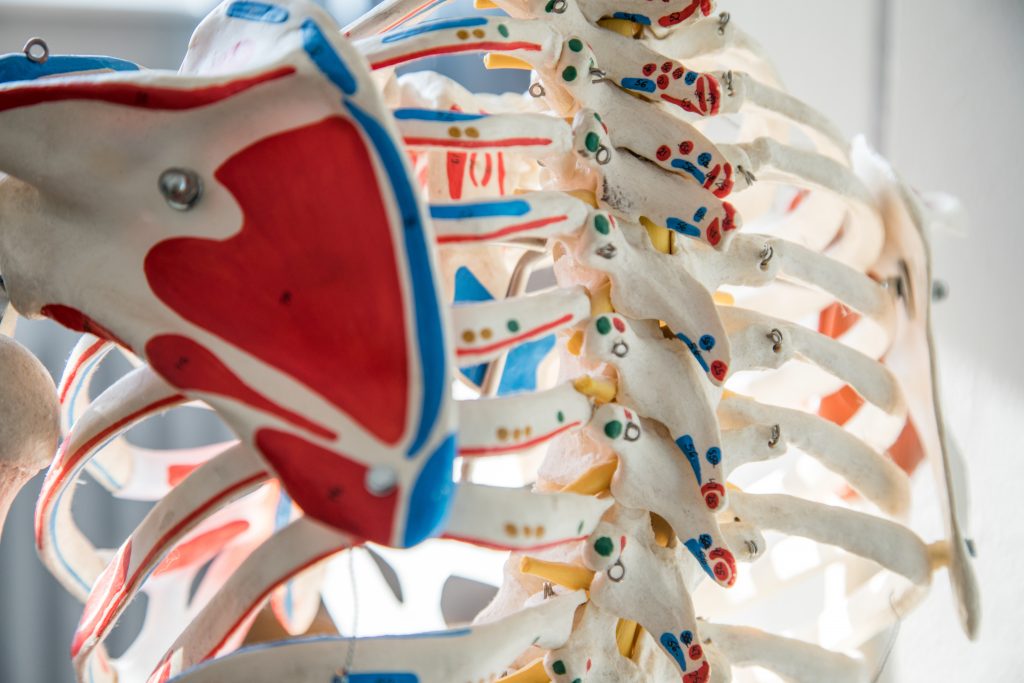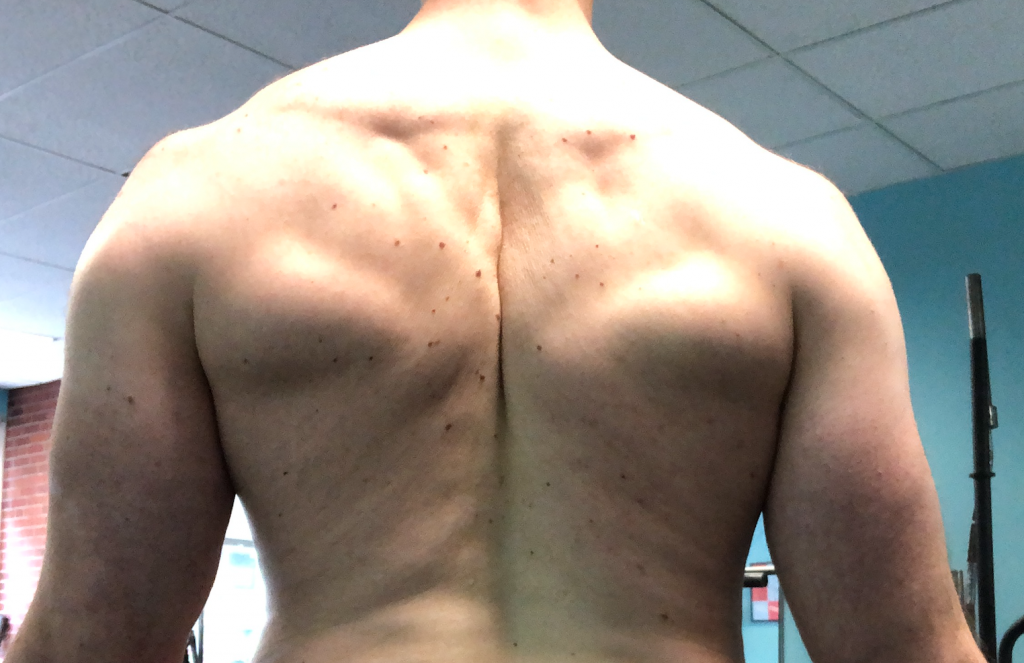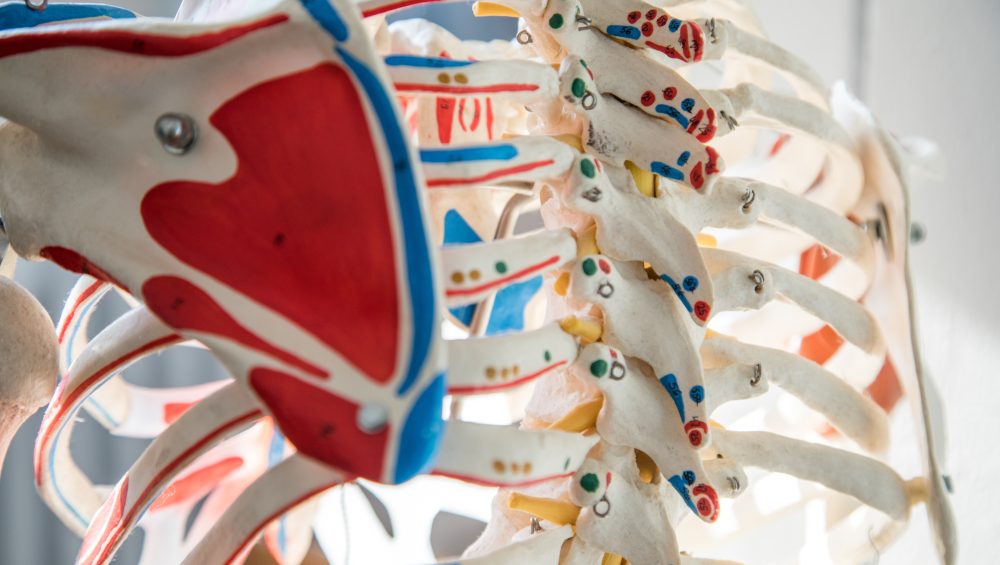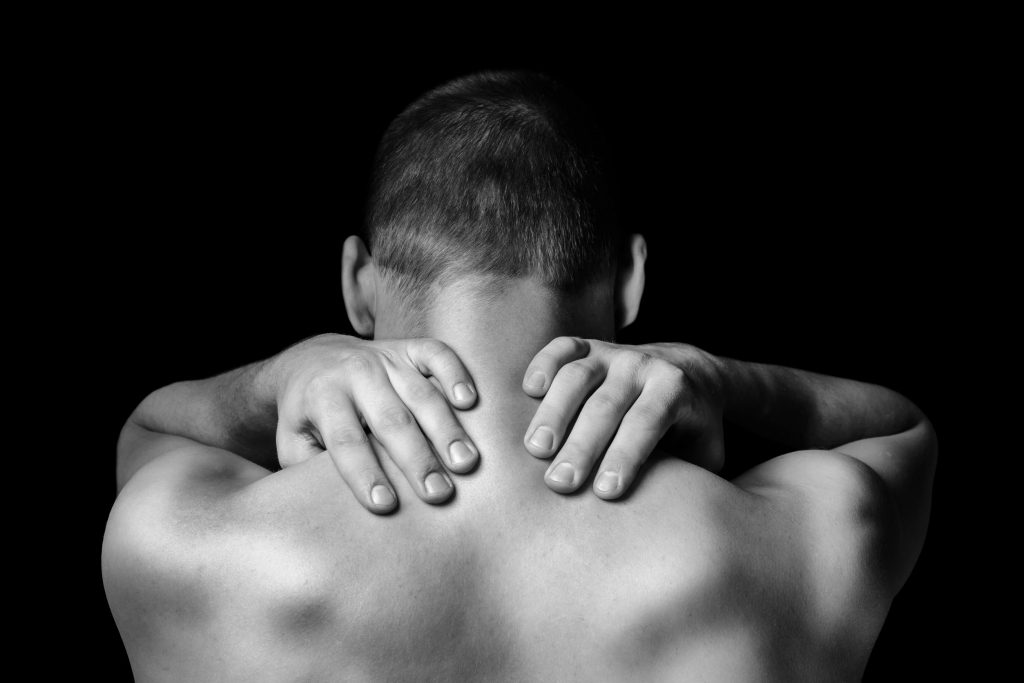When it comes to overall shoulder health there are a bevy of factors to consider:
- Rotator cuff strength
- Tissue quality
- Overuse
- Programming balance
- Even exercise technique (and how joints are loaded)
All are important and things I consider myself when working with a new client who’s shoulder isn’t feeling great. However, there’s one “thing” that’s often overlooked in lieu of all the above:
- Can the shoulder blade move freely on the ribcage?

The Key to Shoulder Health = Scapular (and Ribcage) Movement
The shoulder blades are meant to move, plain and simple. Nothing extraordinary there.
- Upward/downward rotation
- Protraction/retraction
- Anterior/posterior tilt
The ability to perform all of those actions is indicative of a “healthy” shoulder, and the platform for all that movement to take place come courtesy of the ribcage.
The ribcage is shaped in a convex manner.
The scapulae (shoulder blade) is concave, or rounded, in nature. The ability for the two to play nicely together is an often overlooked mechanism of what I like to call “my shoulder fucking hurts syndrome.”
Here’s a common example of what I mean.
The cue “pull the shoulder blades together and down” is a common one we use in the industry. And, you know what? It works splendidly when 1) you’re working with someone who’s stuck in a more flexed/rounded/computer guy posture and/or 2) the goal is to lift as much weight as humanly possible.
I.e., good luck bench pressing (or even squatting/deadlifting) appreciate weight with shoulder blades that aren’t “set” in a more stable position
That being said, too much of anything can have its inherent drawbacks.1.
The “together and down” cue can lead to overactive lats and a more extension-based pattern where the shoulder blades get stuck or cemented together – making it all the more more challenging for them to move about the rib cage.

My shoulder blades basically making out
To that end one of my favorite ways to address this is to include more reaching drills into people’s training repertoire. That and BACK EXPANSION.
More to the point, what I’m really after is targeting the Serratus Anterior, or those finger-like looking thingamajiggies on the side of your ribs.
I’m starting to fall into the camp that addressing Serratus weakness is the answer to everything:
- Shoulder pain?
- Neck pain?
- Back pain?
- Snowblower won’t start?
More Serratus work my friend!
The power of reaching cannot be understated. That in concert with learning to expand the upper back (getting the ribcage to move, via breathing) can be a game changer for a lot of people.
Here’s an effective drill that addresses both.
Seated 1-Arm Reach-Row
Who Did I Steal It From? – Strength coach Conor Harris.
What Does It Do? – Via Conor himself:
“A stiff ribcage is one that lacks trunk rotation and the ability to expand with air. We can free up the ribcage through alternation + reaching of the arms (serratus/obliques) with an intention to pause and expand it posteriorly with air”
The reach engages the serratus/obliques (watch out for that side cramp) and closes off the front side of the body. Air has no where else to go but BACK; it feels wonderful.
Key Coaching Cues: Don’t be a hero. You DO NOT need a lot of weight to perform this exercise, it’s not the point. You’ll pull with one side (elbow to hip, no further) as you simultaneously reach with the other, free hand. From there, inhale through the nose, focus on “breathing into your back,” and then perform a full exhale.
Don’t rush the breaths.
Hold the position for a 2-3 breath count and that’s one repetition.
Perform 3-5 “reps” per side.
No diggidy, no doubt.





